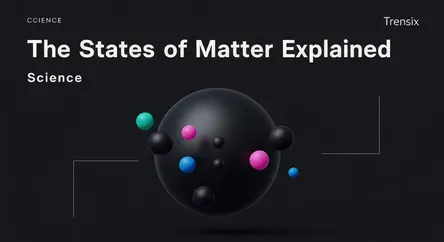Science
The States of Matter Explained

An introduction to the fundamental states of matter—solid, liquid, gas, and plasma—and why new discoveries in this field are so important.
What is it?
A state of matter is one of the distinct forms that matter can exist in. The four states observable in everyday life are solid, liquid, gas, and plasma. In solids, particles are tightly packed in a fixed structure. In liquids, particles are close together but can slide past one another, allowing liquids to flow. In gases, particles are far apart and move randomly, filling any container they occupy. Plasma, the most abundant state of matter in the universe, is a superheated, ionized gas consisting of charged particles. Matter can transition between these states, for example, by changing temperature or pressure, such as when ice (a solid) melts into water (a liquid).
Why is it trending?
While a foundational concept in science, the study of states of matter is trending due to ongoing discoveries of new, exotic states under extreme conditions. Scientists are exploring non-classical states like Bose-Einstein condensates, superfluids, and quantum spin liquids. These discoveries, often occurring at temperatures near absolute zero or under immense pressure, challenge our understanding of physics. This cutting-edge research is vital for the development of future technologies, including quantum computing and ultra-precise sensors, making it a hot topic in material science and physics.
How does it affect people?
Understanding states of matter is crucial for countless daily activities and technologies. Phase changes are harnessed in refrigeration, cooking, and power generation through steam turbines. We use solids for construction, liquids as fuel, and gases for everything from breathing medical oxygen to inflating tires. Knowledge of how materials behave in different states allows engineers to create everything from smartphones to buildings. Even natural phenomena that affect us daily, such as weather patterns, are driven by the principles of water changing between its solid, liquid, and gaseous states.